Competitor research is a cornerstone of good marketing. Good competitor research can stop you from making bad marketing mistakes and can help you make better strategic decisions. It’s a no-brainer, right?
Whether you’re designing a new product, launching a marketing campaign, or starting a blog, chances are your competitors have been there before. Savvy marketers can use this driving force to stay ahead of the game with valuable insights into how they do what they do and why they do it like that.
You need to know who you’re up against. Competitor research is crucial if you want to get ahead in your business and stay ahead of rivals. This guide will explore all you need to know.
What is a competitor?
A competitor is any individual or company (especially within the same market) that offers a similar product or service. They may not be taking away your potential customers directly, but they could be.
For new businesses, a competitor might be someone with an established industry presence (competitors they will face). For more established or innovative businesses, their competitors could be other new entrants who are stealing away their target customers through similar offerings.
As such, it’s in your interest to know who your competitors are and how best to reach your potential customers.
What is competitor research?
To be a confident and strategic marketer you need to know who your competitors are and what they’re doing. Competitor research (also known as competitor analysis) is a process that will help you identify which competitors are targeting similar audiences and where they rank for different keywords.
Furthermore, it helps to discover how much traffic they get, how they promote themselves, and the strategies they use. Armed with this information, you’ll know the competitors you should be worried about.
Competitor research for a business can be quite extensive and daunting. However, completing effective research will help you to better understand your competitor’s strengths, weaknesses, strategies, and much more.
This information is invaluable as it’ll give you insight into your rivals. It will also give you a greater understanding of your own business.
What is the purpose of competitor research?
The purpose of effective competitor research is to identify your competitors’ market strategies, grow your business, and devise strategies to beat your competitors.
Competitor research is the most critical link in the entire marketing process. It is where your business/brand starts to gather intelligence about your competitor’s market position and marketing activities.
Though competitor research focuses primarily on a company’s direct competitors, there are plenty of reasons why it makes sense for you to broaden your scope and look at your competitors’ broader industry or marketplace.
In any case, competitor research is critical because it allows you to assess how your products or services stack up against the competition.
How to perform effective competitor research
1. Identify your competitors

The market is saturated with both aspiring and established companies vying for attention. Identifying your competitors is the first step in discerning who to target when building your online following.
Businesses competing for a slice of the online pie need to know their competitors, particularly in an economy where online consumption grows every day. You may have identified some competitors already, but now you need to review all of your competitors, both known and unknown.
Types of competitors
There are two main types of competitors to recognize: direct and indirect.
Direct competitors
All of your direct competitors are businesses or brands that offer products or services similar to yours, for the same or a similar market, with almost the same solution.
All of them are in direct competition with you and will be monitoring your progress and taking action to try and better their position relative to yours. If it’s not obvious, take time to map out who exactly your direct competitors are.
Indirect competitors
Indirect competitors are companies that offer products or services similar to what you do. They may not be in the same industry, but they can affect your company’s success. It is important to understand the indirect competitors of your business, as they will all impact your strategy.
How to identify your competitors
There are multiple ways to do this, some of them are:
1. Keyword research
Keywords are the primary tool for effective competitor research. When doing competitor research, start by identifying what you want to research. For example, let’s say that you want to research “dog training”.
This could trigger searches for dog trainers, dog obedience schools, and many more keywords that represent your competitors or the services they offer.
If you were trying to reach local customers then it would be logical to start your search around a city name such as “dog training Illinois”, “dog training Texas” etc.
The trick is that you don’t want to just throw a bunch of keywords at the computer and hope it’s going to find some handy information. What you want to do is focus on a few strategic keywords and optimize your research around those words.
For your keyword research, I recommend Adwords Keyword Tool.
Learn more: Best keyword research tools
2. Social media and forums
A real goldmine when researching competitors. Social media is one of the best places to get a feel for what people are saying about your competitor’s products, or what they think about the company as a whole.
Forums are another fantastic way to do competitor research. In forums, you will find that the people looking for advice are either new to the hobby (just like you) or sharing some experience with brands they are familiar with. The information you can get from forums is endless.
3. Monitoring different platforms
Competitors are lurking everywhere, you can never know what they are up to! You need to find out what they are up to! Monitoring different online platforms can help you uncover potential marketing opportunities as well as competitors. There are a couple of ways to gather this information.
You can do it yourself manually by visiting websites regularly, or you can use social media monitoring tools such as HootSuite, and Sprout Social that automate the process of gathering data from different platforms.
Note: There is no point in researching if you aren’t sure who your competitors are. Identifying your competitors is not just about knowing their names and the types of businesses they operate.
It’s also about finding out what they do well and where they need to improve. It’s all about being insightful, so don’t just focus on what you see online – look at what others see online!
2. Look at competitor websites and reviews of user experiences
Competitor websites can be excellent sources for gaining information. Whether you’re building a service or selling a product, it’s essential to know what the user is experiencing.
Researching your competitor’s website will give you useful information on how users are engaging with the competitor’s site. The purpose of this review is to investigate the web content management systems, design and layout decisions, usability, and content structure they use.
Make comparisons of your product images to the competitor product images and their description text from other sources. Are the details in that description from a review?
What words or phrases are used in the given description? Is there any information about how their product performs? Compare to see if yours is similar, better, or if there are new aspects that would make your product stand out.
Also, reading specific reviews about products or services will show more objectively what customers are thinking about the specific problem being solved by your startup. When you check the reviews, pay attention to the following;
- Does the company have any longstanding customers
- Have they gained new customers
- The negative reviews about the brand
- The products and services customers prefer to buy from them
- How customers view their strengths and weaknesses
3. Perform a competitor SWOT analysis
Competitor SWOT analysis is a necessity when you want to create a new product or service that has never been available before. SWOT stands for strengths, weaknesses, opportunities, and threats.
This is the process of analyzing your competitor’s business and based on your analysis determine how you will be able to compete. The purpose of a competitor SWOT analysis is to capitalize on the strengths and opportunities of your competitors while minimizing their weaknesses and threats.
In addition, it is designed to help you gain an insight into how to approach your competitors more effectively. It also put you in a stronger negotiating position if you are selling a similar product or service to them.
In the world of business, understanding the key components of a SWOT analysis provides a beneficial foundation for preparing and delivering strategic or commercial plans, annual budgets, marketing plans, and sales plans.
To do your SWOT analysis the right way, your analysis should cover the following areas:
- Sales strategy
- Pricing strategy
- Marketing strategy
- Brand positioning
- Ecommerce website
- Customer experience
Gather as much information about your competitor as possible, one that will help you put together a good picture of their situation. Experts in marketing can analyze the collected data and other information gathered during the process.
Using the information collected from various phases of the competitive analysis, then a powerful strategy can be fashioned.
4. Analyze your competitor’s SEO efforts
Your competitors infuse their web pages with SEO keywords to give themselves an advantage on search engine rankings. Develop the knowledge you need to take over your competitor’s search positions.
Luckily for you, some competitors don’t use their SEO properly. If your competitor has ranking issues, you can probably benefit by finding those problems and fix them yourself.
No matter what you do, your search engine optimization efforts won’t succeed if your competitors are better at SEO than you. It is essential to monitor your competition. This is true for all industries, but particularly true in SEO since the algorithms change frequently.
The easiest way to get a first-hand feel for your competitor’s SEO approach is to analyze their website’s on-page and off-page SEO efforts. There are many tools out there that can help you do an in-depth analysis of this kind (I listed some of them below).
However, the most basic thing you should be checking is the title tags and meta description texts. If they are optimized, it’s a good sign. If they aren’t, then you need to try to figure out why not.
Knowing what your competitors are doing to rank competitive keywords in Google can be a big advantage. So, don’t joke about this process.
Learn more: Best SEO tools.

Social media is a great way to see how people interact with a company. With more and more people using social media as a way of interacting with businesses, they must know how to connect with their audience.
By checking out your competitors’ social media accounts, you can get an idea of how they communicate and interact with their audience: are they responsive? Are they listening? What kind of tone do they use? Do they handle customer complaints on time?
Social media engagement is a good indicator of customer loyalty and their strategy for growing the brand.
A great way to gauge interest is to check out how many people are engaged with the company’s social media channels as opposed to just general engagement/total followers.
It seems obvious, but it’s not: If you’re not doing it, be sure to check out their social media engagement.
Look for a pattern of strong engagement (lots of likes, shares, and comments). If you’re struggling to find a pulse in their social media efforts, this is probably an indicator that they don’t have a large number of followers either.
These indicators demonstrate the strong social presence of your competitors and how well they engage with their audiences. You can also do a quick check if you are good with Hashtags by simply searching for the most active hashtag on their social media accounts.
Learn more: Best social media management tools.
6. Leverage on competitor research tools
Competitor research tools have evolved to help businesses better understand their market competition. These tools can give you an edge in knowing your competitors well so you can come out on top. Some top competitor tools are:
SEMrush
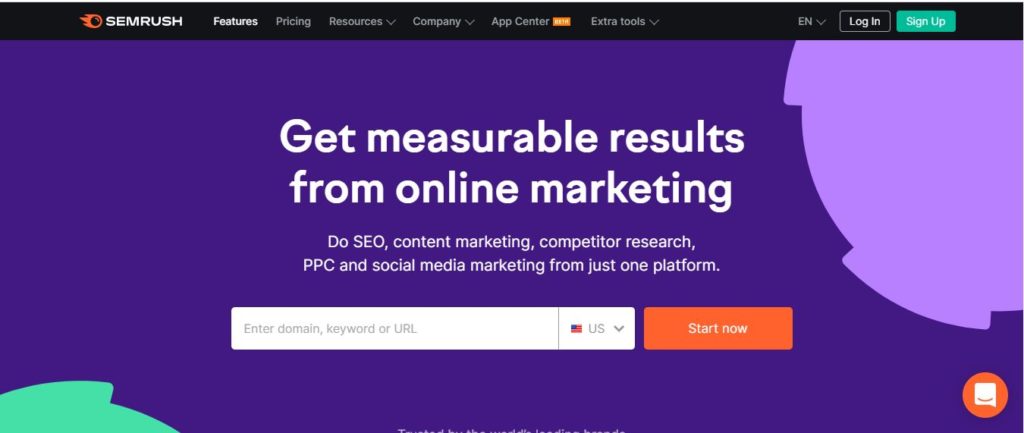
This is an excellent, market-leading competitor research tool. Among the tools, you can use are over 30 that can track SEO, PPC, keyword research, competitor analysis, and a whole lot more.
Discover new competitors, learn their best-used keywords, and analyze their ad copy with the SEMrush tool. Their pricing plans are tailored to your business needs.
Google AdWords Keyword Planner
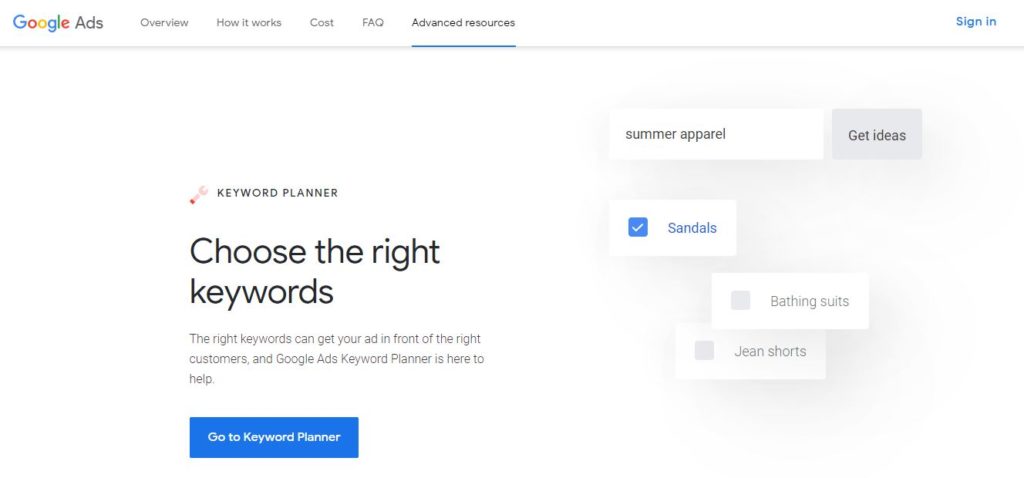
The Google AdWords Keyword Planner is a free Google tool that is vital for keyword research. Free online keyword tools like this can help bloggers and businesses identify keywords in a particular niche and relate it with a percentage of your monthly searches.
Leverage on Google AdWords Keyword Planner tool to determine what are the popular search terms for your product-related keywords and discover what keyword matches with your products’ features.
SpyFu
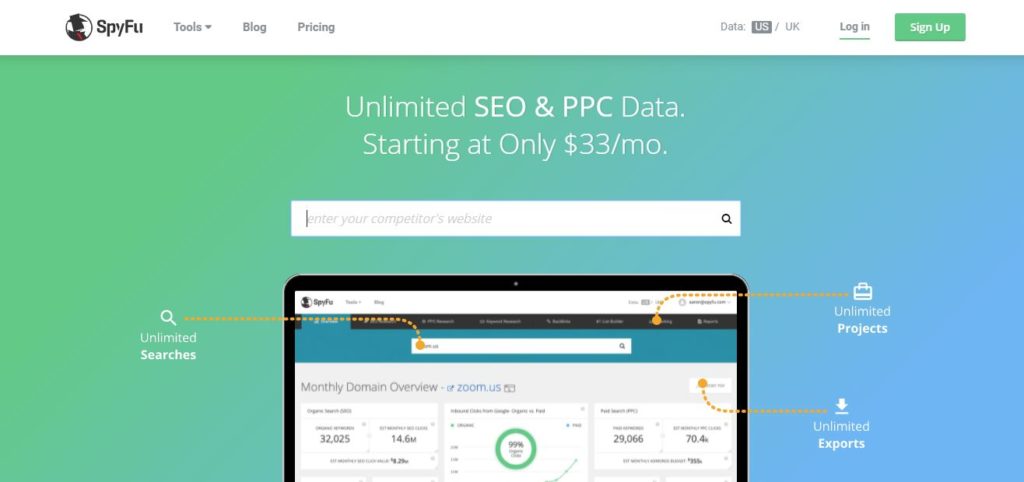
It reveals which keywords websites appear on when they search Google. You can then track every keyword that your competitors use once you have identified them.
In addition, the content and backlinks you search for help find every keyword they are ranking for in the first place.
BuzzSumo
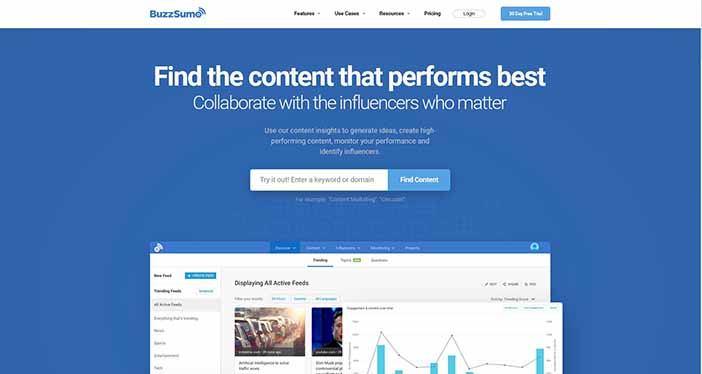
By using BuzzSumo, you can find out how your content compares to your competitors. It is possible to see what content is shared most often on social media, compared with others.
Even if you don’t have time to read your competitors’ articles regularly, you can still schedule alerts which make tracking easier.
Owletter
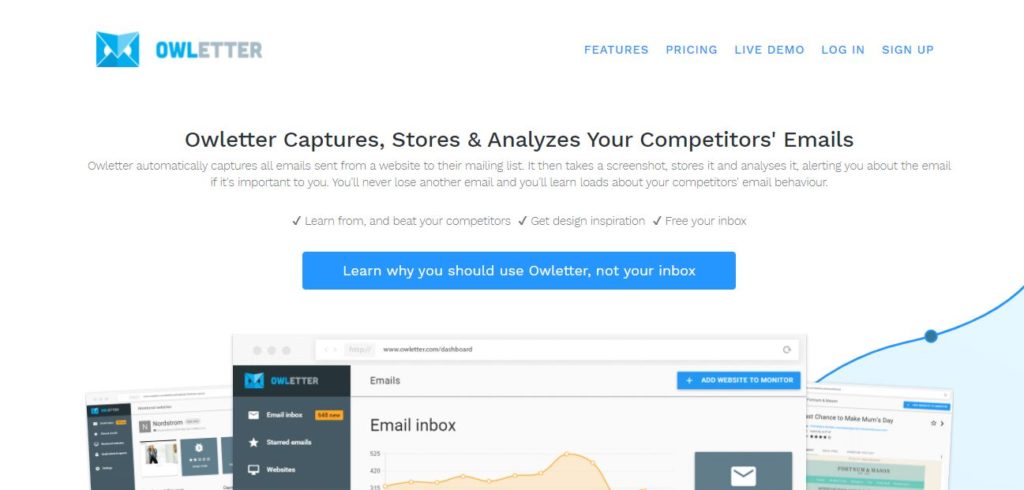
The Owletter tracking tool tracks and analyzes emails sent by websites. By tracking the email marketing of your competitors, you can see what is working for them and what does not.
Sign up for your competitor’s email list to get started. Then for each new email you receive, Owletter will analyze it and notify you if it contains anything useful.
7. Identify a few areas where you can improve
Identifying your areas for improvement isn’t always easy – it may be easy to see how you’re performing, but identifying where you need to improve can sometimes be a whole other question.
Once you’ve identified a few areas where you can improve, each one should be given some thought and consideration in terms of how you could make the change. Usually ‘how’ is something that comes later.
But at this stage, it would help to consider how you can go about improving these areas, as well as what resources you would need to do so. A good way of finding out what your business needs are would be to ask customers.
For example, if you look at your Google Analytics and see that most visitors are bouncing off your website quickly after landing on the page, there are two possible reasons:
- either something is wrong with your website,
- or something is wrong with the user experience and the way that content is being delivered.
By looking for potential solutions for those two reasons, you can then devise solutions to remedy the situation.
Why is effective competitor research important?
It points out your competitive advantage
Competitor research is one of the most important things you can do if you have a brick-and-mortar store or an online business. It allows you to improve your website by finding out what your competitors’ weaknesses are.
This way you can improve your website to ensure your visitors don’t go and visit a competitor website. Competitor Research is not just about knowing your competitors, it’s also about knowing yourself. You’ll discover what makes you better at what you do.
What is the one thing that sets you apart from the rest? What are your competitors doing, which might have an impact on your business? Effective competitor research will give you an understanding of how to best utilize your competitive advantage and not make costly mistakes.
It helps to avoid costly mistakes
Competitor research is important because you don’t want to repeat the mistakes of your competitors. An effective competitor research program is essential in the evolution of any business.
At a glance, knowing what your competitors are up to lets you spot trends and react quickly to seize sales opportunities. Competitor research helps you stay ahead of the competition by anticipating their moves, seizing sales before they do, predicting trends and unforeseen changes in consumer demands.
It will enhance the marketing processes
The objective of competitor research is to analyze the strengths and weaknesses, opportunities, and threats of the major competitors in a market or business area, but what has it done for you? How will you take advantage of the information?
By studying the competition, you gain valuable insight into what works. It will form a crucial part of the marketing process and should influence your decisions right through the product development cycle and beyond to encompass promotion, distribution, pricing, and even customer support.
It will help you discover gaps
Growing your business is always difficult – and without the right information about what’s working and what’s not, a business owner can find themselves flying blind.
When you do some competitor research, you start to learn more about your competitors. You identify areas where they are not performing effectively and you can win customers as a result of filling that gap.
You’ll know your competitor’s pricing strategy
One of the main reasons why you’d want to do competitor research is so that you can learn how you should price your product and what tactics you can use. Competitor research enables you to understand your competitors better and their pricing strategies.
With competitor research, you will be able to take on your competition and beat them at what they do best; thus increasing your profits. You’ll have a better chance of having your product sell like hotcakes if you can copy some of the successes from other companies in your niche.
FAQs
How many competitors must I research?
The short answer is as many as you can find. The longer answer is there is no true number. The number of potential competitors in your space will depend on the strength of your brand and the category itself. It all depends on the product, of course.
If you think good competitors’ research will affect your marketing plan and competitive analysis, then you should do enough research. This will ensure that you have a good grasp of how each of your competitors is targeting the market that you will be in.
Is it that important to know what your competitors are doing?
Yes. It is not only important to know what your competitors are up to, but it is necessary. Your competitors will tell you which markets are working and which ones aren’t. They will give you insights into what marketing strategies are working and which ones aren’t.
You can see trends, consumer demand, usage patterns, etc., important things that can be used in making business decisions. If you are not aware of the activities of your competitors then you are not going to be able to compete with them effectively.
You cannot stay ahead of them and beat them at their own game if you do not know what they are up to.
How often should I conduct competitor research?
Competitor research should be a continuous process, and none more so than competitor analysis. Your competitors are constantly evolving and creating strategies to meet your market’s needs in ways that you may not have even considered.
By conducting competitor analysis frequently, you’ll gain an understanding of how and why your competitors create certain strategies. This enables you to see how their strategy can be an opportunity for you to grow your market share, or protect yourself from being taken over by a particular competitor.
When is the best time to conduct a competitive analysis?
There is never a bad time to conduct competitor research. However, there are certain times when it might make sense. Whenever you have a particular business task that requires competitor research, do it.
For new business pitches, in particular, competitive analysis is often the first step in establishing your value proposition. Another great time to conduct a competitive analysis is when you are planning an innovation effort.
Is it okay if I don’t do a competitor analysis?
No, It is not okay if you don’t do a competitor analysis. Companies, as well as bloggers, need to know how they stack up against the competition – the good and the bad. In fact, it is the one thing every business should do well and with regularity.
There are some benefits to conducting a competitor analysis that may surprise you. In fact, in many instances conducting this kind of analysis will save you time and money.
One reason is that it provides you with a look at your competitors that can make planning your product or service development strategy much easier.
Where do I find my competitor’s information?
The best place to find this information is on their website or blog. They are an excellent source of high-quality product features, and they have the added benefit of showing you what people think your competitor’s strengths are.
Just don’t make the mistake of using a competitor’s blog as a feature list—use it to get ideas for marketing messages that will work for you.
How long does it take to perform competitor research?
There is no set time frame for competitor research. It could range from 1 minute to 1 month depending on the scope of your objectives.
Do bloggers too need competitor research?
Yes, bloggers are also subject to competition. Their readers may also visit other blogs in the category they share. Hence, bloggers need to put in efforts to stay relevant and keep their readers engaged.
Observe successful bloggers and you will see that they are very adaptive. New trends come along, successful bloggers will jump on the wagon and ride the wave to success. The only way to do that is to do proper competitor research.
This goes to show that as much as an offline business can benefit from going through competitor research, so can a business that exists solely in the online world.
Final thoughts
In conclusion, a successful marketing strategy is all about making the right decisions about your competition. Who are your competitors? How to identify them? How can you set yourself apart from them? This guide highlights some of the most important competitor research questions.
From a product’s inception to the launch of the marketing campaign, the ultimate goal of every business is to generate sales. One critical piece of the puzzle in this process is competitor research.
This guide is for anyone who needs to research competitors, whether you are starting a business or just looking to understand the landscape you are already in. I hope that by now, you can now understand your competitors and devise means to outsmart them.
Now that you know how to perform competitor research for your new blog, check out my post on how to promote your blog. Furthermore, to achieve your blogging goals, you might need to use guest bloggers, I have a post on how to vet guest bloggers. You should check it out.
I wish you all the best!
